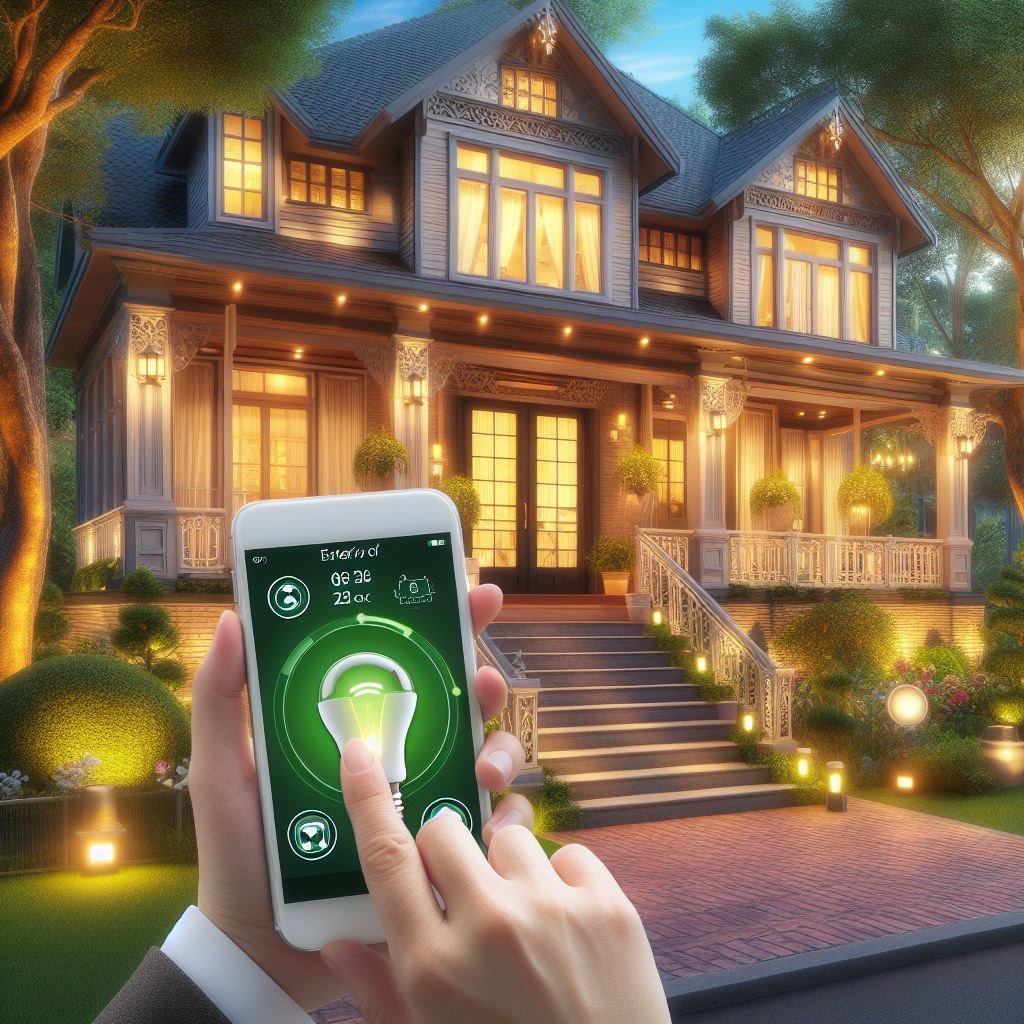
In this guide, we will cover the best smart bulbs on the market, now very popular and widespread devices. In fact, home automation is now available to everyone and it is increasingly do-it-yourself.
Table of Contents
Below you will find the list of the best smart bulbs light models, a comparison table and a detailed description of each of them. After that, we will talk about other wireless light control devices. Finally, an in-depth study on smart lights and WiFi, how they work and why to buy them.
What are the best smart bulbs?
Philips Hue White and Color Ambiance: best smart bulbs
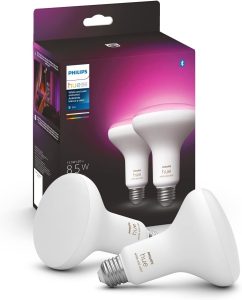
Let’s start the comparison with what many consider the best smart bulbs LED with a product, or rather a range of products, that has now become iconic. Let’s talk about Philips Hue, the Dutch company’s range of smart lights, which is considered a bit of the lighting must-have. From outdoor lights to lamps, you can find the solution that best suits your needs and create a real WiFi lighting system .
In this case, we have chosen one of the most popular options: Philips White and Color Ambiance, in its “starter kit” version that includes a bridge with Zigbee connectivity.
The latter allows the lights to connect to WiFi, for the integrated management of all the devices in the ecosystem (it is possible to associate a plurality of light points and Hue devices to a single bridge).
Fully compatible with Alexa and Google Home, these devices completely justify the above-average market price.
In addition, through Philips Hue, you can customize the tone, intensity, or color of the light, making even the lights illuminate and change color to the rhythm of the music. You will also be able to control all devices in entire rooms.
If you already own a Zigbee hub or devices that integrate it (like Echo Plus, Echo Show, or Echo Studio), you’ll be able to purchase (and control) Hue bulbs (Zigbee only) individually without the bridge. For this reason, Philips offers different White and Color Ambience sets and configurations, which may or may not include remote control, bridge, more or less LED bulbs, etc.
In addition, the White and Color series also includes bulbs of different shapes, such as spotlights, more elongated bulbs and table lamps (see dedicated paragraph below).
However, for some time now, the brand has launched the line of Bluetooth bulbs , which do not need the bridge for proper operation. Simply buy the Bluetooth versions and download the Philips Hue Bluetooth app (they won’t work with the other one).
TP-Link LB130 RGBW Bulb
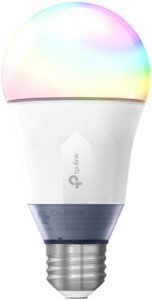
Another of the best smart bulbs is the TP-Link LB130. While it’s less popular than Philips Lighting’s Hue lighting system, it’s a great product if you want a wireless light that can be controlled directly from your smartphone.
Like Hue, the range of colors proposed is 16 million : you will therefore have infinite possibilities to color your environment with the most suitable light. Plus, you have a selection of preset “moods” to use during specific activities like reading, dinner with friends, parties, and at night to help you sleep.
Plus, of course, the ability to create and save custom sets.
In the panorama of wireless lights, therefore, this is a product that can compete with Philips and, in addition, perfectly compatible with Amazon Alexa, Google Assistant and Apple Home Kit , with the consequent possibility of controlling the lighting in your home by voice .
Additionally, through the KASA app, you can program the bulb and preset the times at which it should turn on and off.
Definitely one of the best WiFi bulbs without a hub.
Lifx Color A60
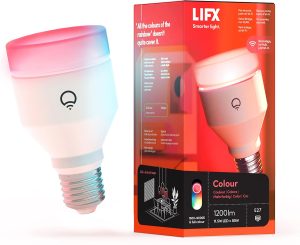
Another brand making headlines is Lifx , which offers excellent quality products, such as the Lifx Color A60 multicolor bulb model.
This WiFi LED bulb is one of the few that you will find with 1100 lumens , which makes it have the same lighting capacity as a regular 75W bulb.
There are many intelligent functions offered by the application, such as the possibility of choosing between 16 million available colors , or adjusting the intensity or tone (more or less warm) of the light.
T he Lifx bulb is compatible with voice assistants such as Alexa or Goolge (even with Apple HomeKit), Lifx A60 does not require an external bridge for WiFi connection.
Despite its price, it is undoubtedly a high quality bulb that is really worth it.
Yeelight 1S Wifi Bulb, 16 Million Colors Music Sync
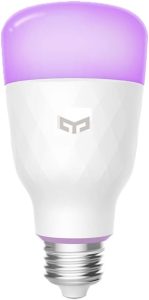
Among the best smart bulbs is undoubtedly Xiaomi Yeelight, one of the most popular products in the category .
In fact, this product probably offers the best value for money on the market.
It has a power of 600 lumens, which is not bad considering the price. And it is fully compatible with Amazon Alexa and Google Home.
As for the functions, in addition to the selection of colors, it has Flow mode and Music mode.
This this bulb does not need an external hub. So it is very easy to install, you just have to place it in the lamp holder and connect it to WiFi using the mobile application.
Fitop Alexa Smart LED WiFi Bulb Dimmable 10 W 900 LM Lamp
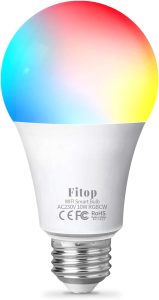
Among the most popular cheap smart bulbs is undoubtedly Fitop, which over time has become one of the most popular brands on Amazon.
These RGBW LED bulbs reach a brightness of 1000 lumens and are fully compatible with major voice assistants.
The light temperature can be changed from 2200 to 6500 Kelvin, being able to select either a cold white light or a warmer one suitable for moments of relaxation.
Like many products in this category (and in this price range), the management app is SmartLife/Tuya.
What are smart/WiFi lights and wireless lighting systems?
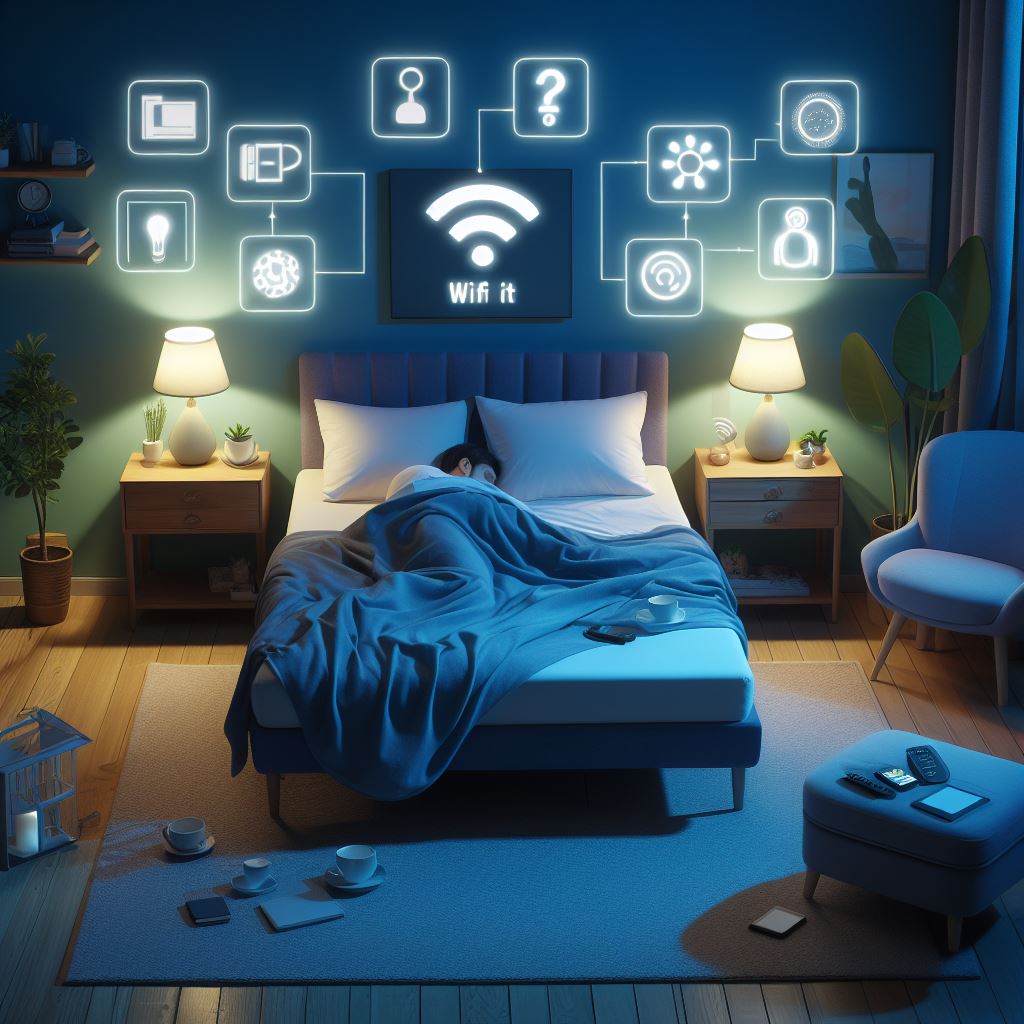
These are LED lamps or bulbs that can be controlled directly from your smartphone or by voice (if they are compatible and integrated with a smart speaker such as Amazon Echo or Google Home).
These can function as normal white (or yellow) light or colored light, meeting your needs and requirements.
They easily connect to the home WiFi network and, through the integrated application downloadable on Android and iOS, allow remote control of the lighting.
Therefore, with these devices it is possible to create a wireless lighting system without the intervention of a professional.
All you need is a smartphone or tablet and a WiFi connection to control your smart bulbs, lamps, spotlights and outdoor lights.
Installing and replacing smart light bulbs: is it difficult?
Absolutely not. Simply replace the old bulb with the connected one, download the dedicated app and you’re done.
Obviously, for the smart light to work, the physical switch that controls it must be in On mode, otherwise you will not be able to control it.
Now we know what a WiFi light is. But what are its advantages and why is it convenient to manage wireless lighting?
The discourse is also similar when it comes to replacing the smart light bulb. In fact, it will be enough to carry out the reverse procedure, unscrewing the bulb and throwing it into the corresponding containers, or taking it to the nearest ecological island.
Why buy a smart WiFi bulb or lamp?
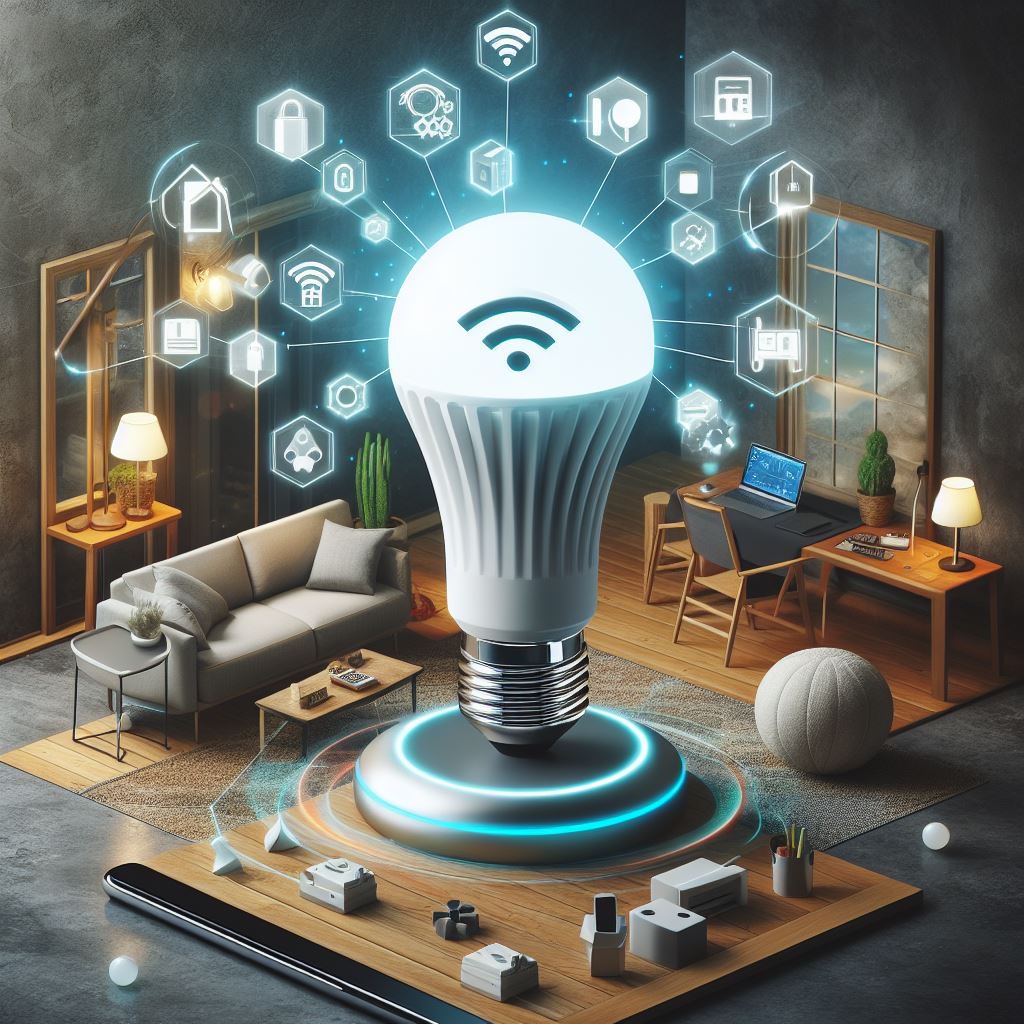
What are the advantages of using Bluetooth or WiFi smart light bulbs? We have gathered the most important professionals below:
- Energy Saving – LED lights alone consume much less than a regular incandescent bulb. So imagine this combined with the possibility of being able to program the lighting according to your presence inside the house… result: cost reduction and savings on the electricity bill. Therefore, the purchase of a WiFi bulb should not be considered a cost, but rather an investment that will pay for itself over time.
- Control: Bluetooth and WiFi LED lamps allow you to control the lights from a smartphone or, as anticipated, via voice. The remote control of the lights provides undeniable advantages in terms of convenience and flexibility. In fact, you can manage lighting from anywhere, even thousands of miles away. Plus, thanks to integration with smart speakers, you can also use just your voice.
- Outdoor spaces: If you have a garden, switching to a WiFi lighting system is the smartest choice you can make. You will have full control of the lights in your outdoor space, being able to illuminate some areas instead of others. More granular and precise management.
- Integration: not only control and cost reduction, but also convenience. This is undoubtedly due to the integration with home automation systems, as well as presence and motion sensors. You no longer have to move a finger to turn on the light, but your presence in the house will be enough to activate the lighting.
WiFi LED bulb brands: Which are the best?
Choosing which LED bulbs to buy depends largely on your choice of brand. In fact, smart light bulb and lamp brands are expanding rapidly, with dozens of Rising Sun brands diluting the category, offering basic, unpretentious products. Below is a list of the best LED bulb brands:
- Philips Hue
- Lifx
- Osram
- Xiaomi
- Teckin
- Fitop
- Sengled
Smart bulbs: how to choose
Color: colored or white bulbs?
One of the first factors to consider before purchasing a WiFi bulb is undoubtedly the range of colors available .
In fact, you can choose between a multi-color or white smart bulb.
Obviously, the best WiFi bulbs on the market are those that guarantee a wide combination of colors to choose from and adequate power.
In this case, most products on the market are capable of emitting colored light with an RGB (Red, Green, Blue) matrix.
Thus, by combining red, green and blue, these bulbs offer the possibility of choosing between around 16 million different combinations . In contrast, single-color lights are more limited from this point of view, but cost less on average.
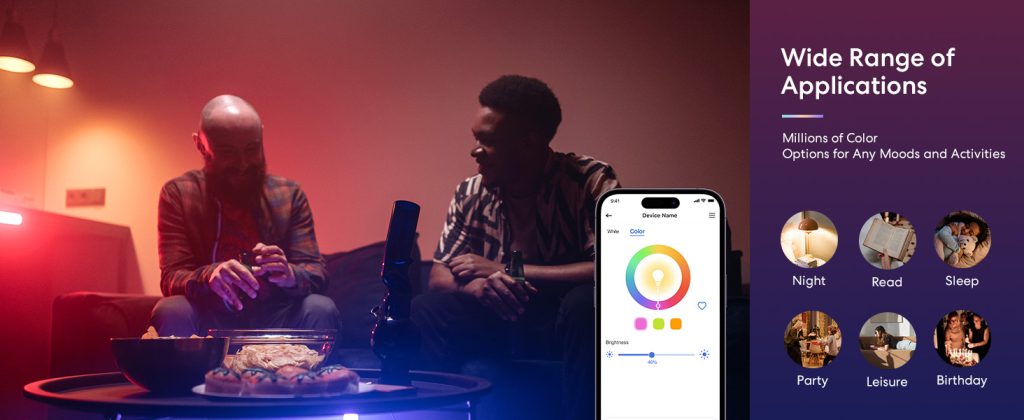
LED bulb power
We have always been used to evaluating the power of a light bulb by the number of watts. However, the latter indicates how much energy a light uses and not how much it actually emits.
So, to better understand the level of brightness reached by a smart LED bulb, it is advisable to use another unit of measurement: the lumen . The number of lumens indicates the amount of light visible to the human eye.
Therefore, the higher the number, the brighter the light. Therefore, with LED bulbs it is possible to have a light source of good intensity, with significantly lower energy consumption than traditional incandescent bulbs.
Voice control with Alexa, Siri, Google Assistant
The arrival of voice assistants and smart speakers has highlighted the possibility of voice control of connected devices .
However, to be able to turn the light on and off using just your voice, the bulb must be compatible with Alexa, Google Assistant or Siri voice assistants.
Don’t worry, most WiFi bulbs on the market are compatible with these artificial intelligences .
This also allows you to insert the bulbs into an ecosystem of connected products that interact in synergy with each other.
For example, with Alexa or Google Assistant routines, it will be possible to configure a series of actions for different devices, with a single voice command.
Dimmable WiFi bulbs
The best smart bulbs have the ability to dim. In other words, if a light is dimmable, it is possible to adjust its intensity so that it emits only the desired amount of light.
In other words, they are light bulbs with a remote control.
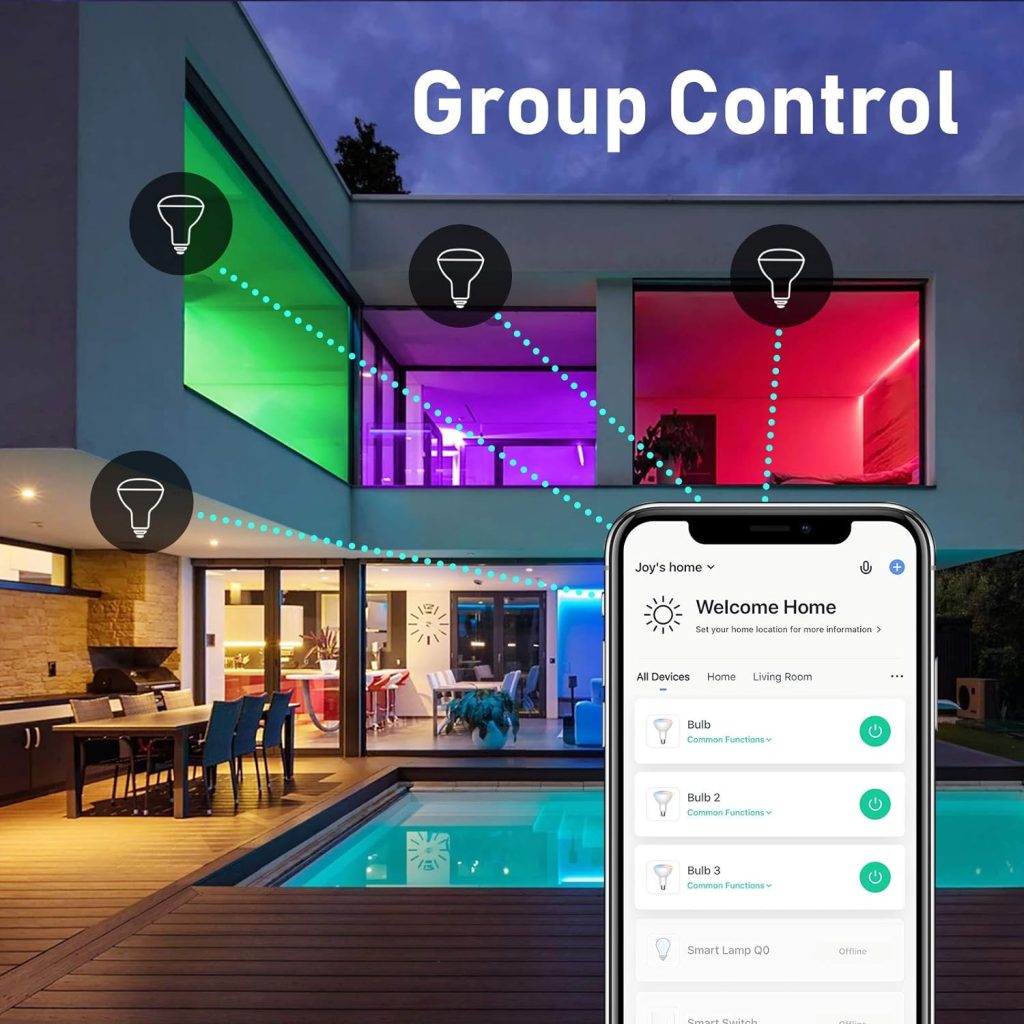
This function is very useful and interesting in case you want to create a particular atmosphere or you simply do not need the full potential of the bulb.
Or, with some bulbs it is possible to configure the “natural wake-up” mode, with which the light will automatically increase in intensity, replicating the sun’s tendency.
Bridge presence
Not all smart light bulbs connect directly to the WiFi network. Some, like Philips Hue, need a central hub (“Bridge”), from which a large number of lighting points can be managed in an integrated and organized way.
So in this case, the hub will connect to the WiFi and transmit the signal (e.g. Zigbee or Z-Wave) to the bulbs. Hubs are useful if you want to create a really complex wireless lighting system, perhaps including outdoor spaces too, so you can easily control each area.
If, on the other hand, you need a simpler setup, for example 1-2 smart bulbs, you can turn to products like Yeelight, which offer good performance over native WiFi connectivity. Simply install the bulb, connect it to WiFi via the app and it is ready for direct control.
What are smart bulbs/lights or WiFi?
Smart bulbs/lights are devices equipped with WiFi/Bluetoooth connectivity or other types of connectivity (in this case they require hubs) that allow them to be controlled remotely via smartphone or voice (if supported). In addition, they offer several advanced features (more colors, scenarios, geolocation, scenarios, etc.).
How does a smart light bulb work?
A smart bulb is used like a normal bulb: once screwed in, configure it via the dedicated smartphone app. Most smart bulbs offer different color combinations, some will also be able to adapt to the time of the music and work within scenarios (night, cinema, studio, day, etc.).
How much does a smart light bulb cost?
The price varies depending on the characteristics: there are many cheap bulbs on the market, from €10-15. However, if you want more complex products, you can spend €50-€100. Smart panels and similar can cost between 200 and 300 euros. Almost all light bulbs are compatible with the main home automation ecosystems (Alexa, Google, Apple).
Do smart light bulbs require a hub?
Most smart light bulbs do not require hubs as they have WiFi connectivity. However, there are some models, usually the most complex or those belonging to a specific brand/ecosystem, that require a home automation hub, with which they communicate using a different protocol (for example: Zigbee). An example is Philips Hue.


I read this piece of writing fully about the comparison of latest and previous technologies, it’s amazing article.